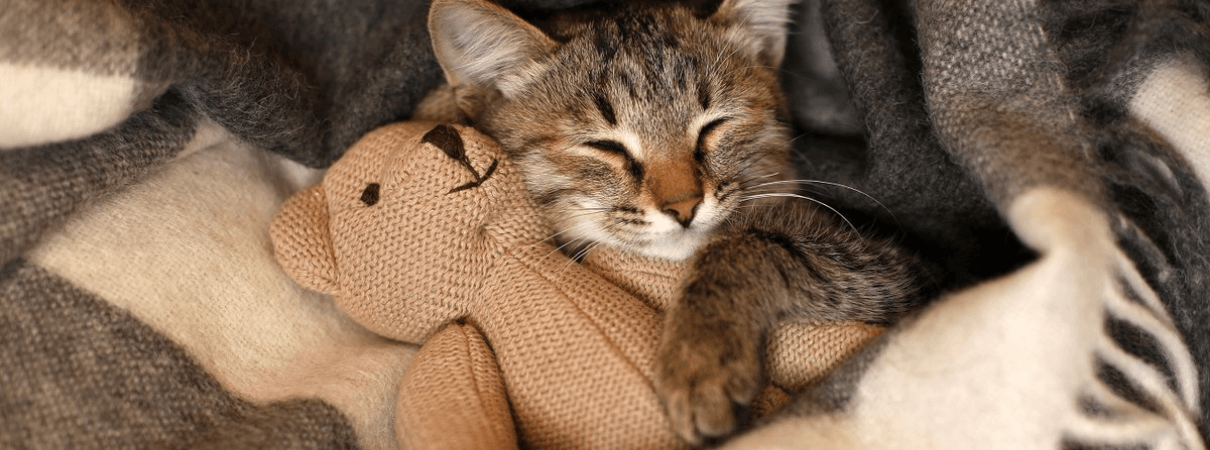One Health, Domestic Cats, and Zoonotic Diseases
One Health. Have you heard of it? The chances are good that you haven't, yet this term has permeated the public, wildlife, and veterinary health professions for years. And in light of the global COVID-19 pandemic, One Health has never been more relevant.
One Health is a collaborative strategy for achieving optimal health outcomes that is based on a recognition that the health of people, animals, and the environment are interconnected. Thus, to help promote healthy outcomes for people, we must also support healthy domestic animals, wildlife communities, and environments. Early work on these connections began in the 19th century and by 1964 was coined “One Medicine.” In 2009, the Centers for Disease Control and Prevention (CDC) launched its One Health Office, which facilitates interdisciplinary coordination for One Health strategies.
One of the major priorities of One Health is zoonotic pathogens, those infectious agents that can be spread between people and animals. SARS-CoV-2, the infectious virus behind the COVID-19 pandemic, is one such zoonotic pathogen.

One Health is based on a recognition that the health of people, animals, and the environment are interconnected. Image courtesy of the CDC.
ABC's work to rejuvenate bird populations and restore ecosystems certainly promotes healthy outcomes, but perhaps the most direct connection between ABC's work and One Health applies to our Cats Indoors program. Cats Indoors promotes responsible domestic cat (Felis catus) management solutions that benefit people, animals, and the environment.
Domestic cats are a nonnative species. Their introductions by people, both intentionally and accidentally, have caused massive wildlife harm and disrupted ecosystems around the world. As predators, domestic cats have contributed to the extinction of 63 species in the wild, and they are the single greatest source of direct, human-caused bird mortality in the United States and Canada, where bird populations have experienced precipitous declines since 1970. In the U.S. alone, domestic cats are estimated to kill 2.4 billion birds every year. That's more than 4,500 birds per minute.
But the impacts of free-roaming domestic cats extend beyond their predatory role — and include the transmission of pathogens to people and other animals. Domestic cats can transmit a wide variety of zoonotic pathogens. One of the best-known is the rabies virus. Although their canine counterparts (remember Old Yeller?) have historically been more frequently associated with rabies, domestic cats have actually been the top source of rabies among domestic animals in the U.S. for decades. And, as compared to wildlife, domestic cats are disproportionately more likely to expose people to this deadly disease.

Domestic cat with bird. Photo by iStock.
Toxoplasmosis, caused by infection with the parasite Toxoplasma gondii, is another domestic cat-transmitted disease. The parasite can only sexually reproduce in the gut of a feline and is then excreted into the environment through feces. A single domestic cat can excrete hundreds of millions of tiny T. gondii eggs (called oocysts), which remain infectious in soil, on plant material, or in water for months to years. Any bird or mammal — including people — that accidentally ingests one of these oocysts or eats the tissues of an infected animal can contract toxoplasmosis.
Toxoplasmosis is an identified health risk to a wide variety of species, including wildlife, domestic animals, and people, in a range of environments. In people, consequences of infection can include miscarriages, blindness, deafness, organ failure, and death. Pregnant women and individuals with compromised immune systems are particularly susceptible to the disease, though anyone may become infected. The CDC lists toxoplasmosis among the top five neglected parasitic diseases, and more than 1 million people are estimated to become infected in the U.S. every year.
Infections in certain animals, such as livestock and game species (e.g., White-tailed Deer), are not only problematic for the individual animals but also for consumers of infected meat. Toxoplasmosis is actually the second-leading cause of death among foodborne illnesses in the U.S. The economic costs to agricultural producers, as well as to infected individuals, can also be significant.
So, regarding the cat issue, how do we achieve optimal health outcomes for people, animals, and the environment? The obvious answer, of course, is to keep cats indoors! All domestic cats should be maintained under an owner's control, whether that be indoors, on a leash, in a catio, etc. Permitting domestic cats to wander parks and neighborhoods puts wildlife, people, and domestic animals — including roaming domestic cats — at risk.

Indoor cat. Photo by Larisa Lomaeva/Shutterstock
But what about unowned domestic cats? Consistent with a One Health approach and the best available science, ABC supports removing these animals from the environment, just as we manage dogs. This removal could include adoption or placement in a sanctuary. The most important thing, from a One Health perspective, is to effectively reduce community risks caused by domestic cats roaming the landscape.
We can all do our part by keeping our owned domestic cats indoors (take ABC's pledge online!), promoting science-based animal control ordinances, and supporting animal shelters, cat sanctuaries, and other organizations working to remove — and not return — domestic cats from the outdoors.
For more information, visit ABC's Cats Indoors website by clicking here.
 Grant Sizemore is ABC's Director of Invasive Species Programs.
Grant Sizemore is ABC's Director of Invasive Species Programs.


















































